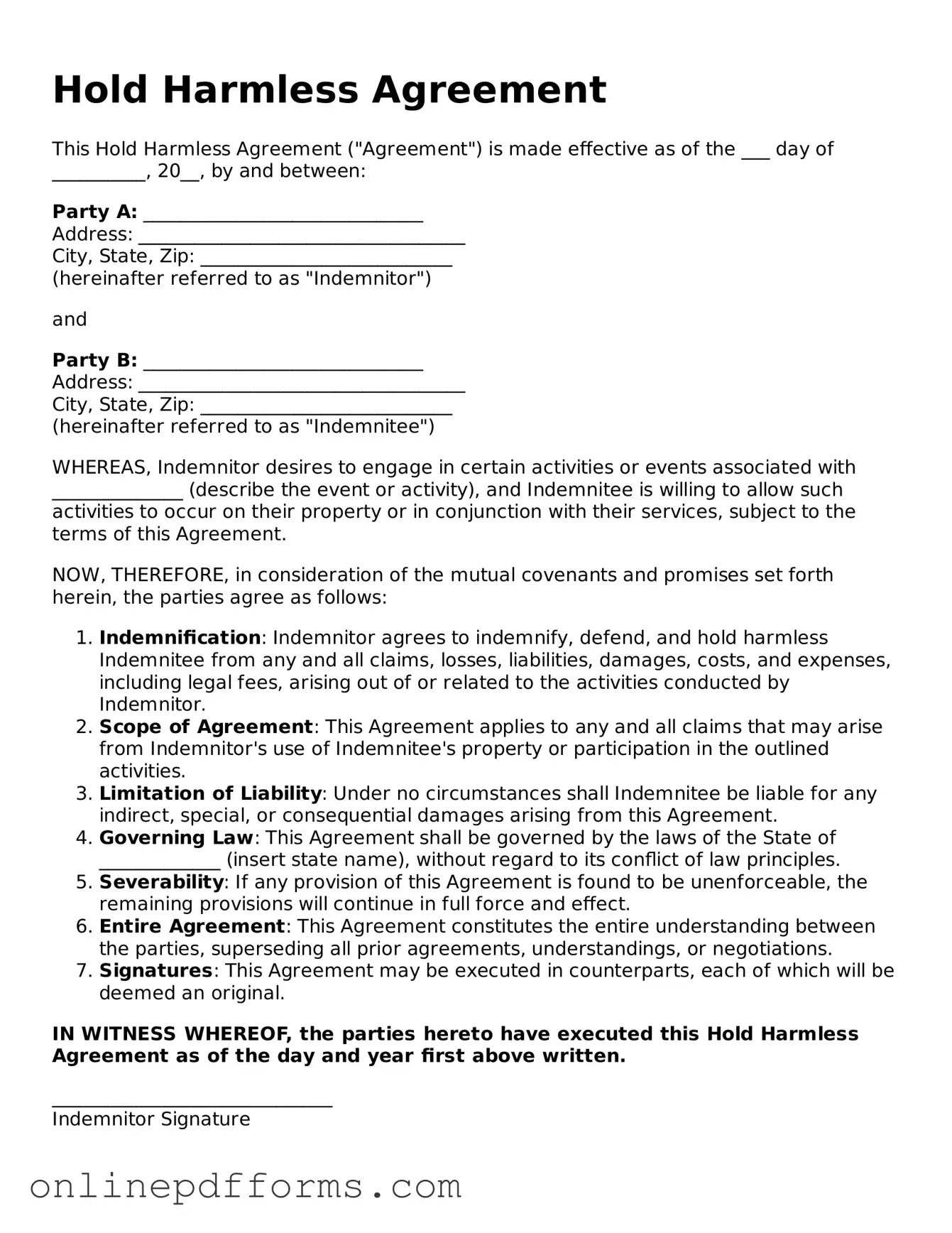A Waiver of Liability is a document that releases one party from legal responsibility for any injuries or damages that may occur during a specific activity. Like the Hold Harmless Agreement, it protects the party from being sued for negligence. Participants often sign this document before engaging in potentially risky activities, such as sports or recreational events. Both documents aim to ensure that individuals understand the risks involved and agree not to hold the other party accountable for unforeseen incidents.
An Indemnity Agreement is similar to a Hold Harmless Agreement in that it involves one party agreeing to compensate another for certain damages or losses. In this case, the indemnifying party promises to cover the costs associated with claims made against the other party. This agreement often comes into play in business transactions, where one party may want protection against potential legal claims arising from the actions of the other. Both documents serve to allocate risk and provide a level of security for the parties involved.
An Assumption of Risk Agreement is designed to inform participants of the inherent risks associated with an activity. By signing this document, individuals acknowledge that they understand these risks and agree to participate despite them. Similar to the Hold Harmless Agreement, it aims to protect the organizing party from liability. It ensures that participants take personal responsibility for their safety while engaging in the activity.
When engaging in the process of buying or selling an all-terrain vehicle, it is essential to complete the necessary documentation to protect both parties involved. A critical part of this transaction is the Vehicle Bill of Sale Forms, which serves as proof of ownership transfer and reinforces the legal agreement between the buyer and seller, ensuring a smooth and secure transaction.
A Confidentiality Agreement, or Non-Disclosure Agreement (NDA), is used to protect sensitive information shared between parties. While it may not directly relate to liability like the Hold Harmless Agreement, both documents establish clear boundaries and responsibilities. The NDA ensures that one party does not disclose confidential information, while the Hold Harmless Agreement ensures that one party is not held liable for certain risks. Both serve to create a safe environment for the parties involved.
A Service Agreement outlines the terms and conditions under which services will be provided. This document can include clauses that limit liability, similar to those found in a Hold Harmless Agreement. Both documents help clarify expectations and responsibilities between parties. They ensure that all parties understand their rights and obligations, which can prevent disputes down the line.
A Partnership Agreement is another document that shares similarities with the Hold Harmless Agreement. This agreement outlines the roles, responsibilities, and liabilities of each partner in a business venture. Just like a Hold Harmless Agreement, it can include provisions that protect partners from certain liabilities incurred by the partnership. Both documents help establish a clear framework for cooperation and risk management among parties.
A Rental Agreement, particularly in the context of property rental, can also resemble a Hold Harmless Agreement. This document outlines the terms of the rental, including responsibilities for damages or injuries that may occur on the property. Both agreements aim to protect one party from liability due to the actions or negligence of another. They clarify expectations and responsibilities, fostering a safer environment for all parties involved.
